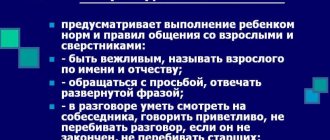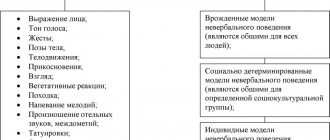Models of communicative personality
By a communicative personality we will, following V. Kashkin, understand the totality of individual communicative strategies and tactics, cognitive, semiotic, motivational preferences formed in communication processes.
An individual and a communicative personality are not the same thing. Different personalities can coexist within one individual. The concept of multiple personality is now also widespread in psychology. The extreme manifestation of this is clinical dual personality (mental disorder), but a healthy person also manifests himself in various areas, in various linguistic markets.
The defining parameters for a communicative personality are three: motivational, cognitive and functional.
.
Motivational parameter
determined
by communication needs
and occupies a central place in the structure of the communicative personality. If there is no need, then there is no communication, or there is pseudo-communication, most likely determined by the psychological need for the communication process as such, and not for the transmission of a message (loneliness, gaming socialization, etc.).
Based on the communicative need, a communicative attitude
, which is pursued by the communicative personality.
Cognitive parameter
includes many characteristics that form the individual’s inner world in the process of accumulating cognitive experience: knowledge of communicative codes, the ability to carry out introspection and self-reflection, that is, introspection and self-awareness, metacommunication skills, the ability to adequately assess the cognitive and communicative horizon of the communicant partner, myths and prejudices, stereotypes and beliefs. The success of communication and the impact on the interlocutor largely depend on the compatibility of the cognitive characteristics of the communicants.
Functional Parameter
includes three characteristics that determine the communicative competence of an individual: practical knowledge of verbal and non-verbal means to carry out communicative functions; the ability to vary communicative means in the communication process in connection with changes in the situation and communication conditions; constructing discourse in accordance with code norms and etiquette rules.
Now about models or types of communicative personality. There are four of them.
- Dominant communicator
: strives to take the initiative, does not like to be interrupted, is harsh, mocking, speaks louder than others. To “fight” such a communicant, it is useless to use his own techniques; it is better to adopt the strategy of “speech exhaustion” (enter speech after a pause, quickly formulate your position, questions, requests, use “cumulative tactics”). - Mobile communicator
: easily enters into a conversation, moves from topic to topic, speaks a lot, interestingly and with pleasure, does not get lost in an unfamiliar communication situation. You should sometimes - in your own interests - return it to the desired topic. - Rigid communicator
: experiences difficulties in the contact-building phase of communication, then is clear and logical. It is recommended to use the strategy of 'warming up' the partner (introductory part about the weather, etc.). - Introverted communicator
: does not strive to take the initiative, gives it away, is shy and modest, constrained in an unexpected communication situation. When communicating with him, you should speak calmly and not interrupt.
Some experts distinguish types of linguistic personality depending on the areas of literature.
For all types of oral literature, the creator of speech coincides with the linguistic personality - the individual speaker. In written literature with the handwritten technique, the creator of the speech also coincides with the individual (except for documents).
In documents, the creator of the speech can be collegial; one document can be created by different legal entities. Such a linguistic personality can be called collegial
. In printed literature, the work of the author and the publisher (creation and replication of the text) is divided.
Here we have a cooperative speaker
. Texts of mass communication combine the features of collegial and cooperative speech activity (news agency + editorial staff + publishing house), therefore, we have a collegial-cooperative linguistic personality. Computer science as a type of literature contains three types of activities (summary and annotation as a complex work on the analysis of the primary text and the synthesis of the secondary + information retrieval + automated control), therefore it is a collective speech activity.
A communicative personality is the most important component of personality in general, because communication occupies 80% of all human existence (listening - 45%, speaking - 30%, reading - 16%, writing - 9%).





